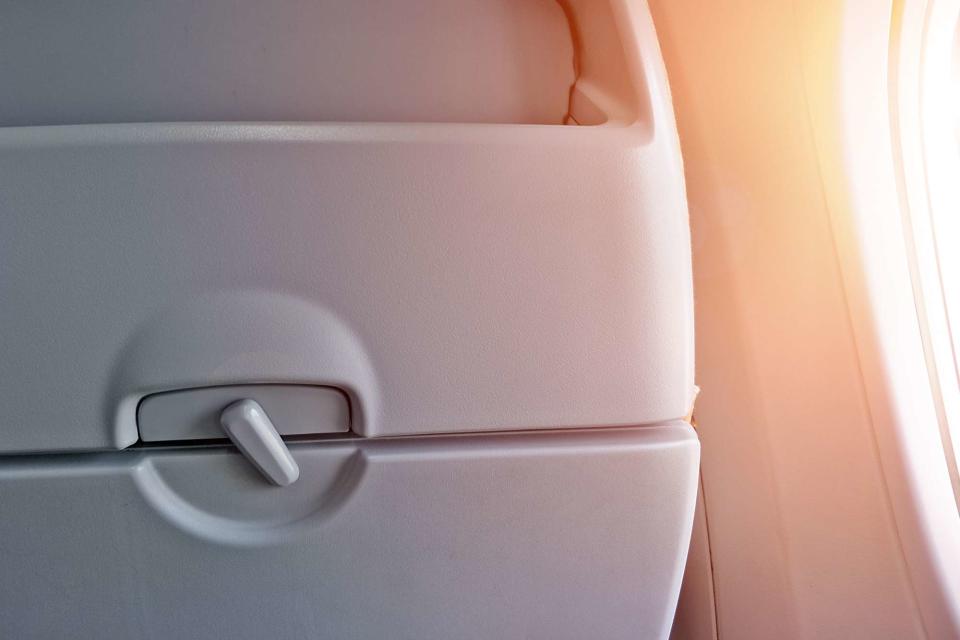The Real Reason You Have to Stow Your Tray Table When You Take Off and Land
It all comes down to safety.

artorn/Getty Images
Just as seat-back trays are a standard part of every airplane cabin, stowing them for takeoff and landing is a standard part of the flying experience. While you might be frustrated that you have to pack up your laptop early or hold your phone in your hand to watch a movie or show, there's a very good reason those trays need to be locked during those two phases of flight: safety.
"The plane can experience sudden movements like turbulence or even an aborted takeoff. If the tray tables are left open and down, things on them could go flying and become dangerous. So, to prevent any objects from becoming hazards, it's important to stow and lock the tray tables in their upright position," says David Doughty, CEO of private jet company Admiral Jet.
But what's more, tray tables need to be stowed for unobstructed passenger movement. "In the unlikely event of an emergency, you need to be able to get out of your seat quickly and make your way to the exit without being impeded by a tray table," says Montreal-based flight attendant Steve Daniel. "This is also why we always ask to make sure that your bags are fully stowed under the seat in front of you. It may seem like a minor thing, but in a critical situation, every second counts."
Having the tray down may also prevent passengers from assuming the proper brace position for impact, which, in forward-facing seats, typically requires bending forward in some fashion. (You can check the safety pamphlet in the seat-back pocket to determine your proper brace position, or you can ask your flight attendant for instructions.)
Related: The Real Reason You Have to Put Your Airplane Seat Upright During Takeoff and Landing
There's also a reason that the trays must be stowed during takeoff and landing, specifically. "Takeoff and landing are the two phases of flight with the highest likelihood of unexpected events," says former pilot Hans Mast, now a travel agent with Golden Rule Travel.
Both Boeing and Airbus, two of the world's largest aircraft manufacturers, release regular studies about aviation accidents. According to Boeing's most recent report, which covers 2011 through 2021, about 67 percent of fatal accidents involving Boeing aircraft around the world occurred during takeoff, climb, final approach, and landing. Similarly, Airbus reported that about 75 percent of worldwide accidents involving Airbus aircraft between 2002 and 2022, both fatal and non-fatal, occurred during takeoff, approach, or landing.
For all these reasons, the Federal Aviation Administration, which governs U.S. air travel, has written into law that seat-back tray tables must be stowed for takeoff and landing. "Safety always comes first in aviation, and these precautions are part of a broad approach to minimize risk," says Mast.
Even though you are allowed to use tray tables during other parts of the flight, consider using them sparingly, as turbulence can happen unexpectedly, and your belongings can quickly become projectiles that might injure someone. And while we're on the topic of seat-back tray tables, here's one quick reminder for you: Clean them with an antibacterial wipe before you use them. According to one study, they have eight times more germs on them than lavatory flush buttons do.
For more Travel & Leisure news, make sure to sign up for our newsletter!
Read the original article on Travel & Leisure.

